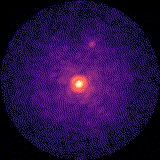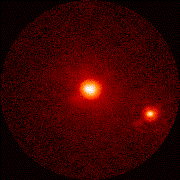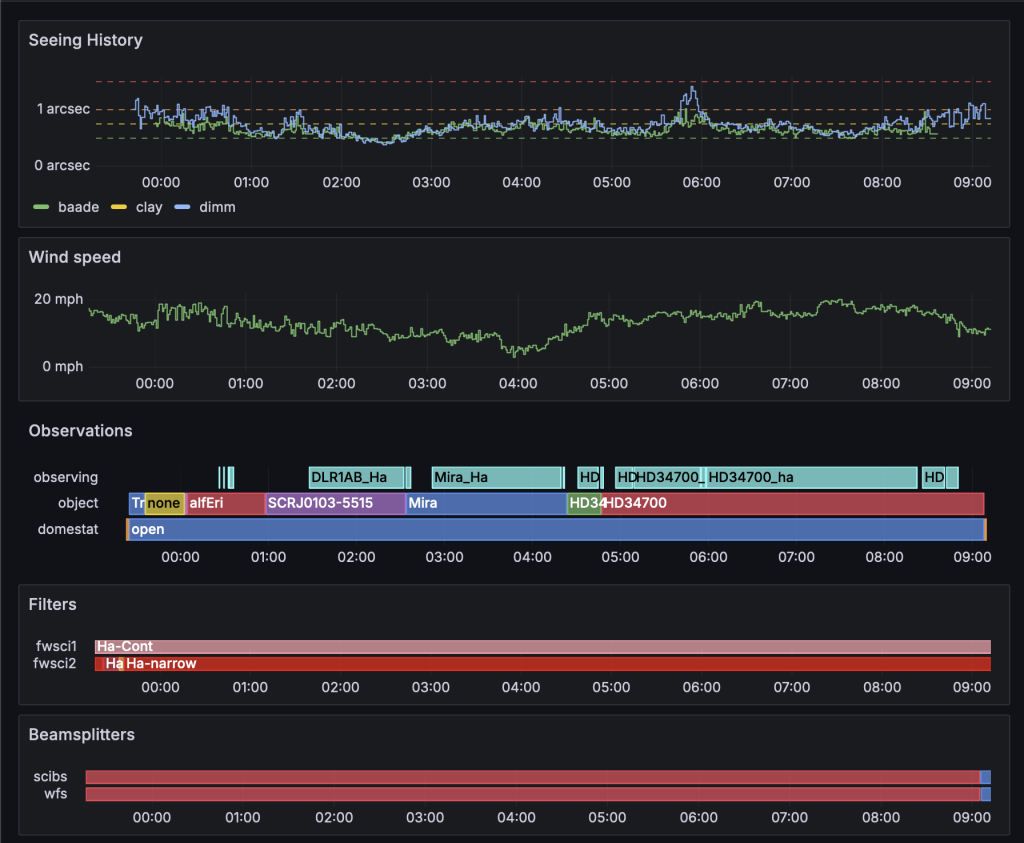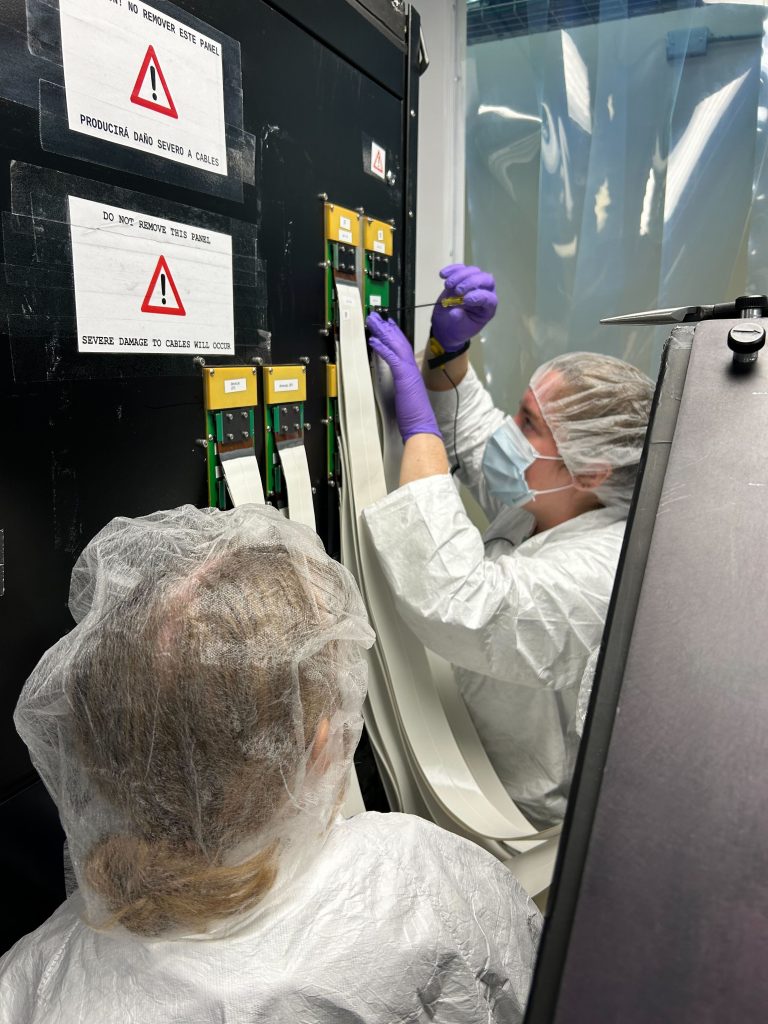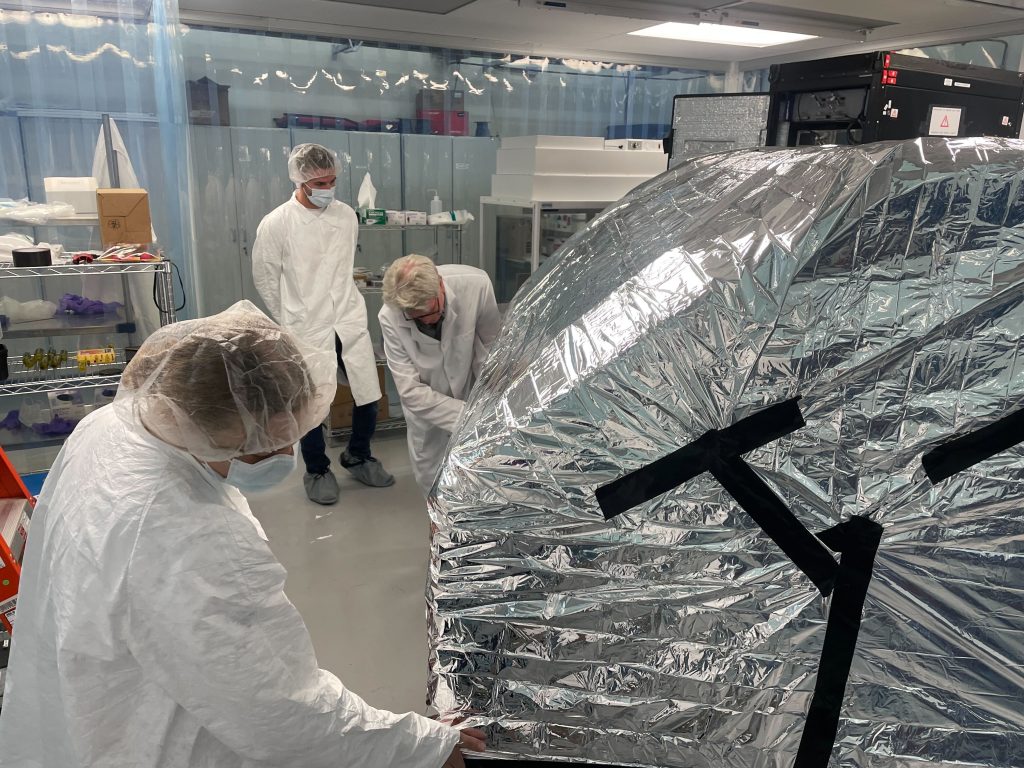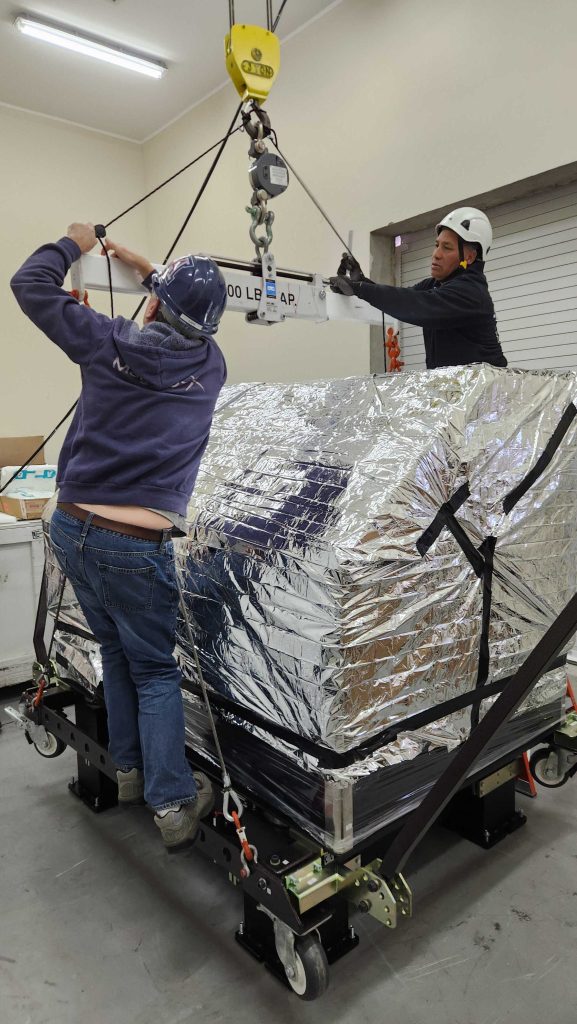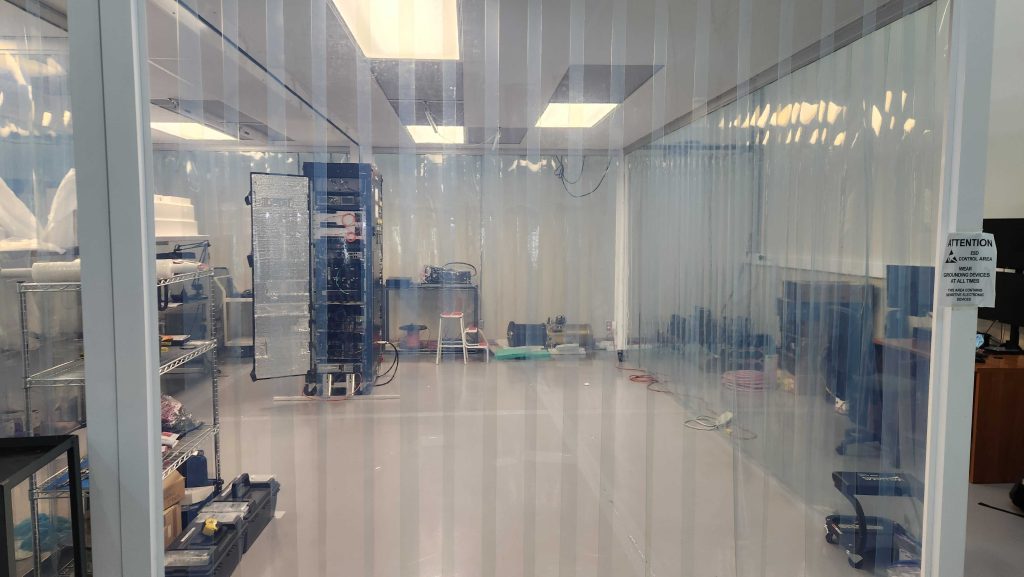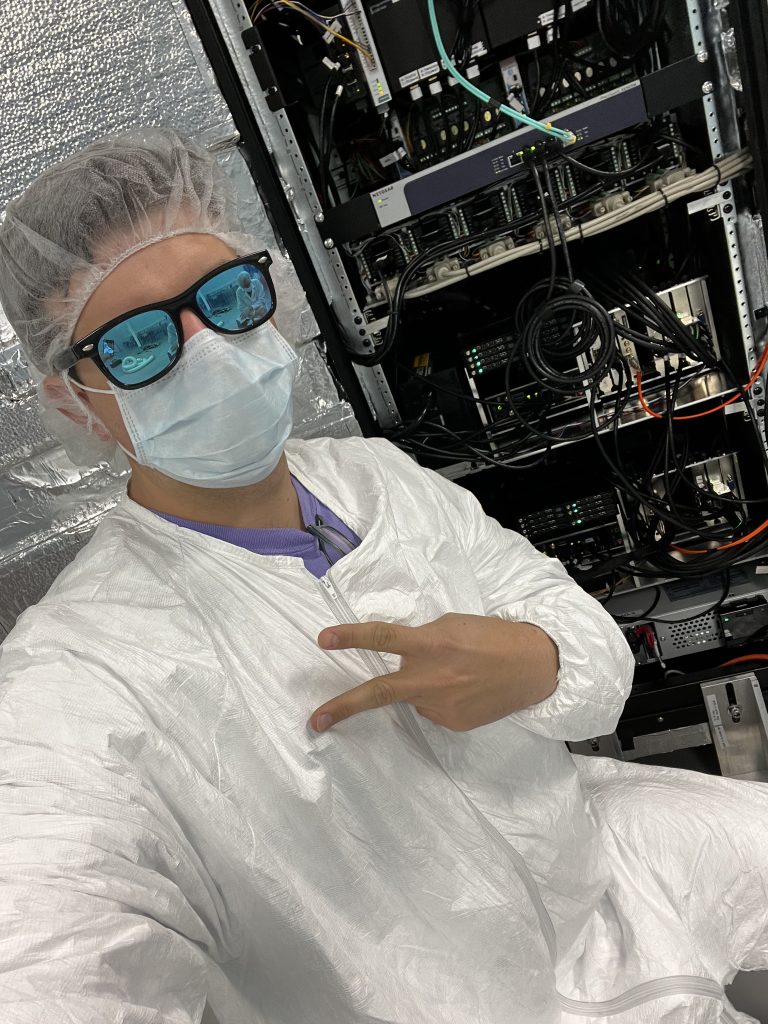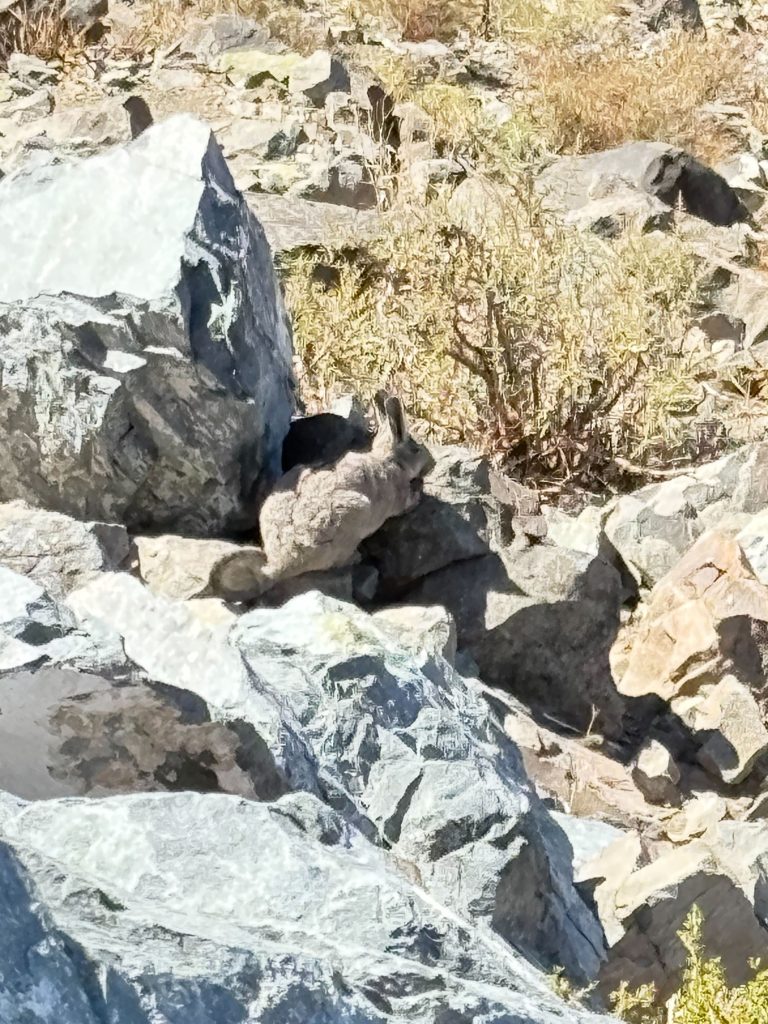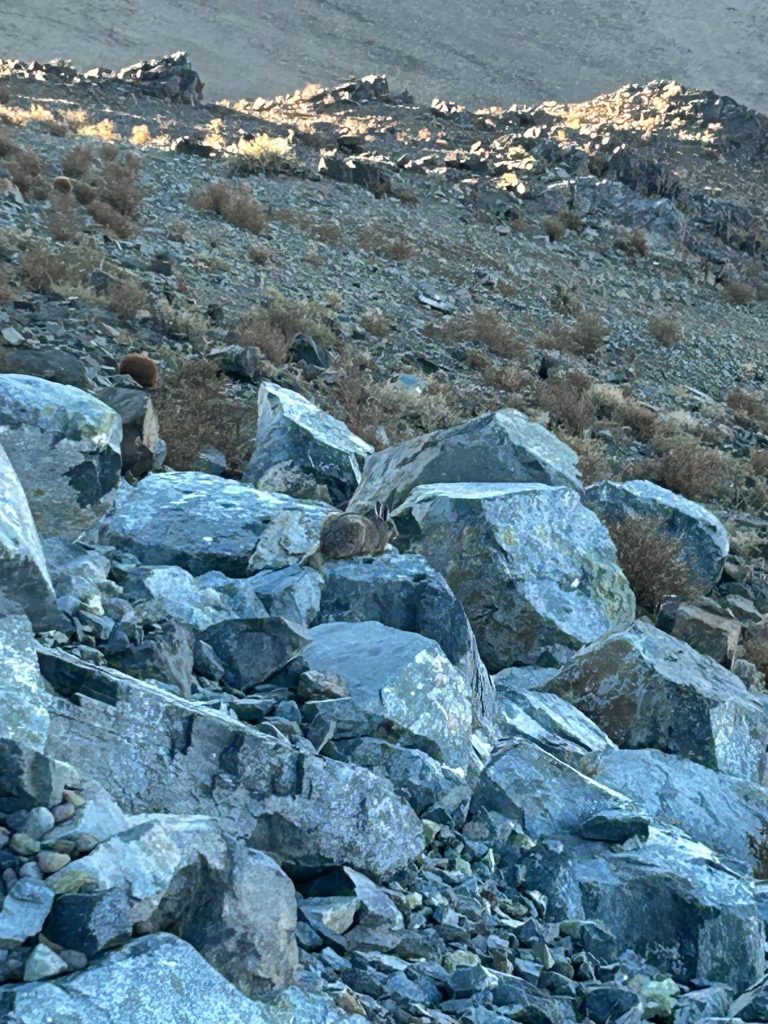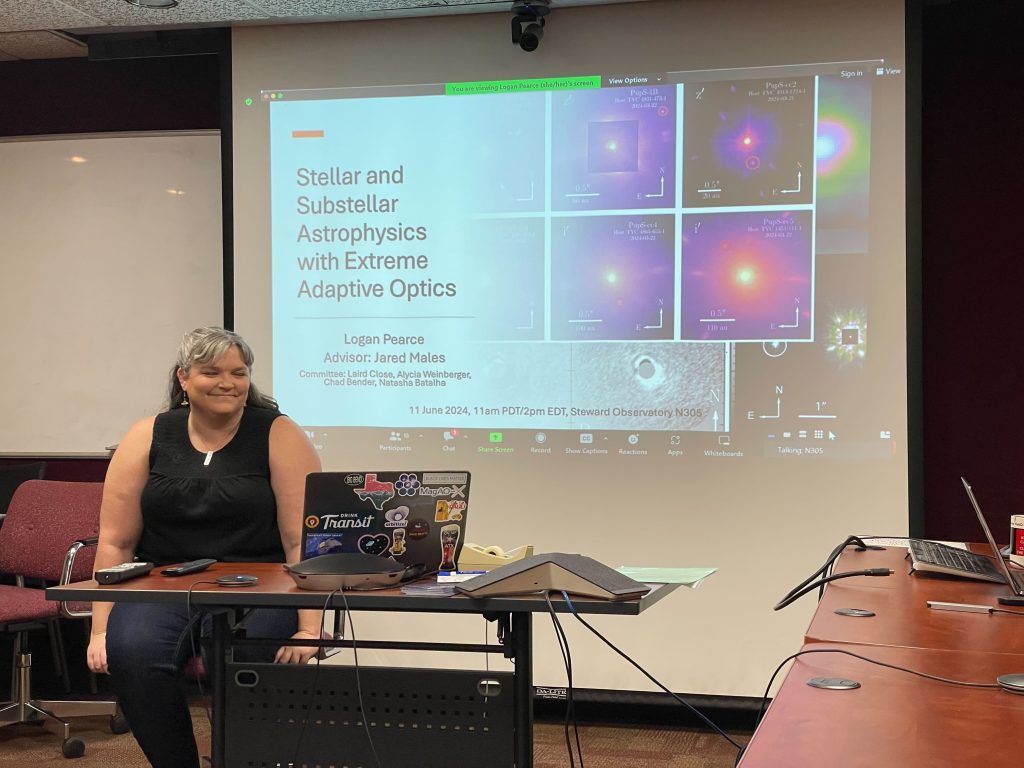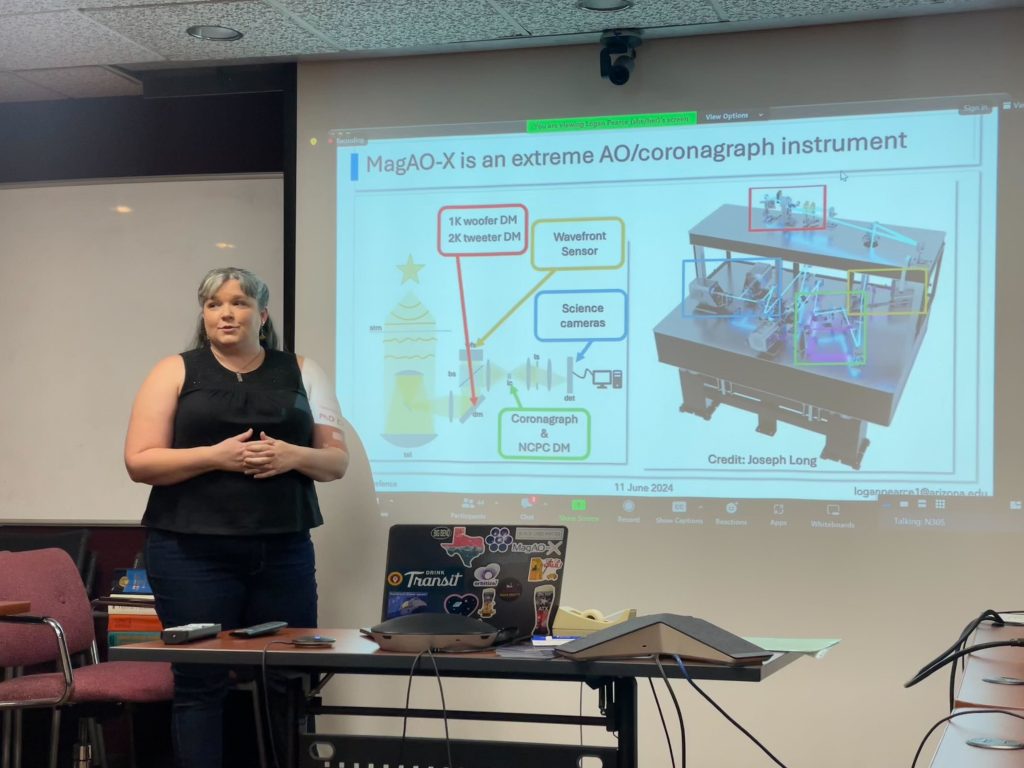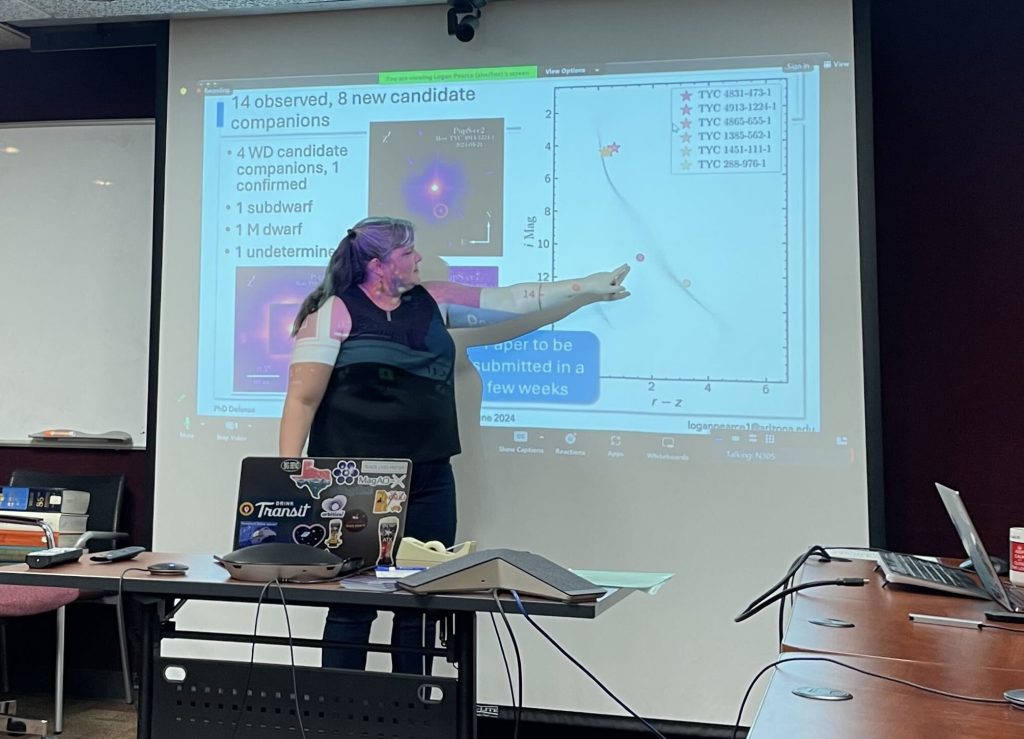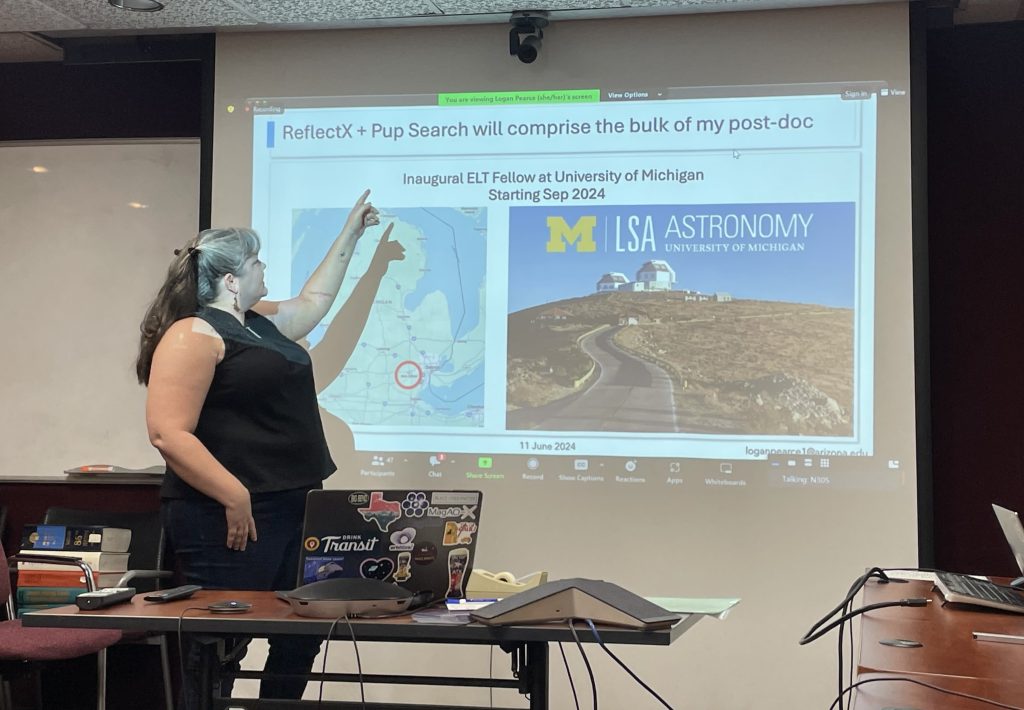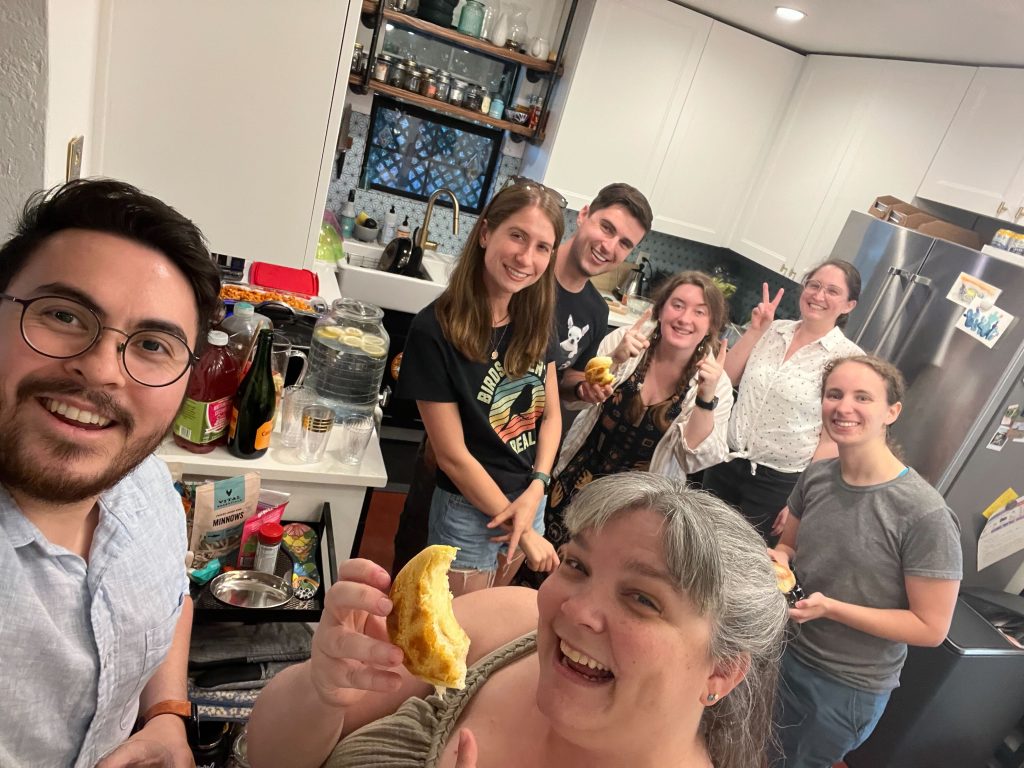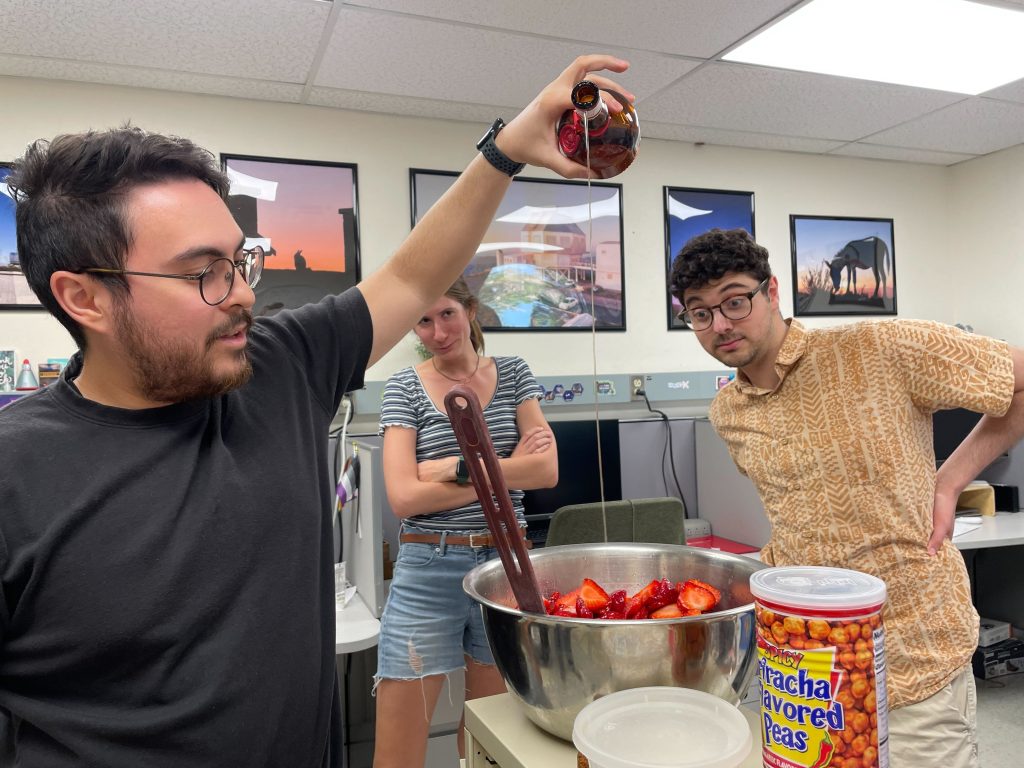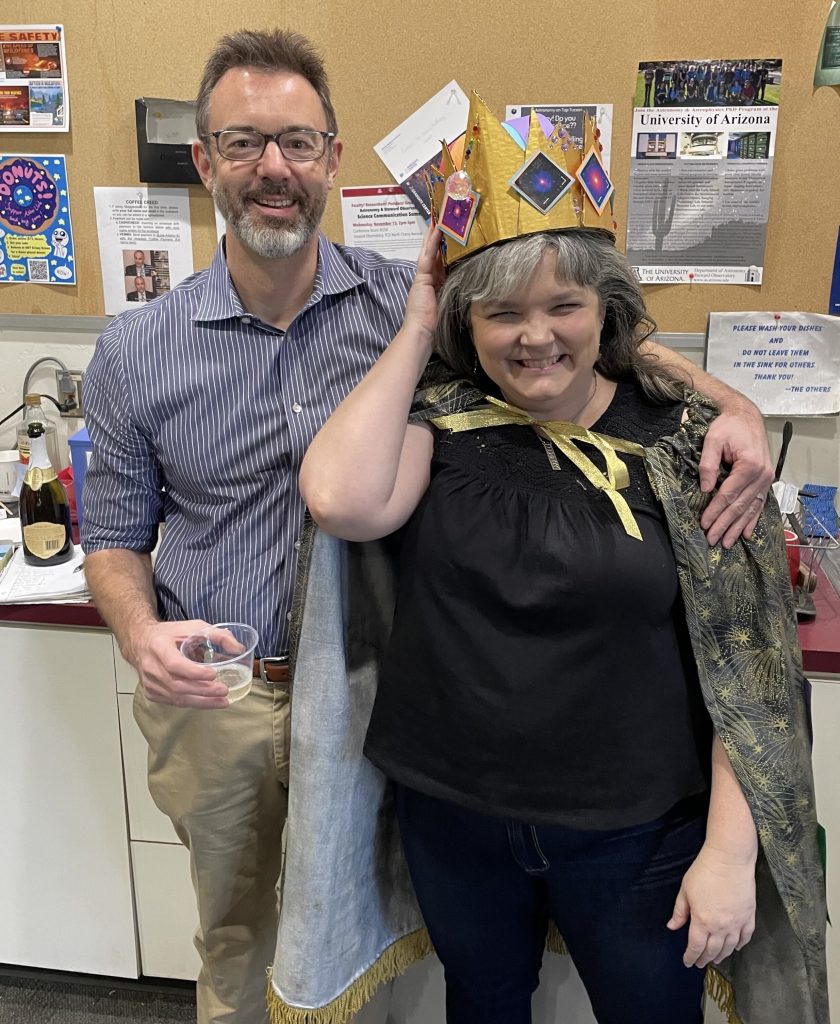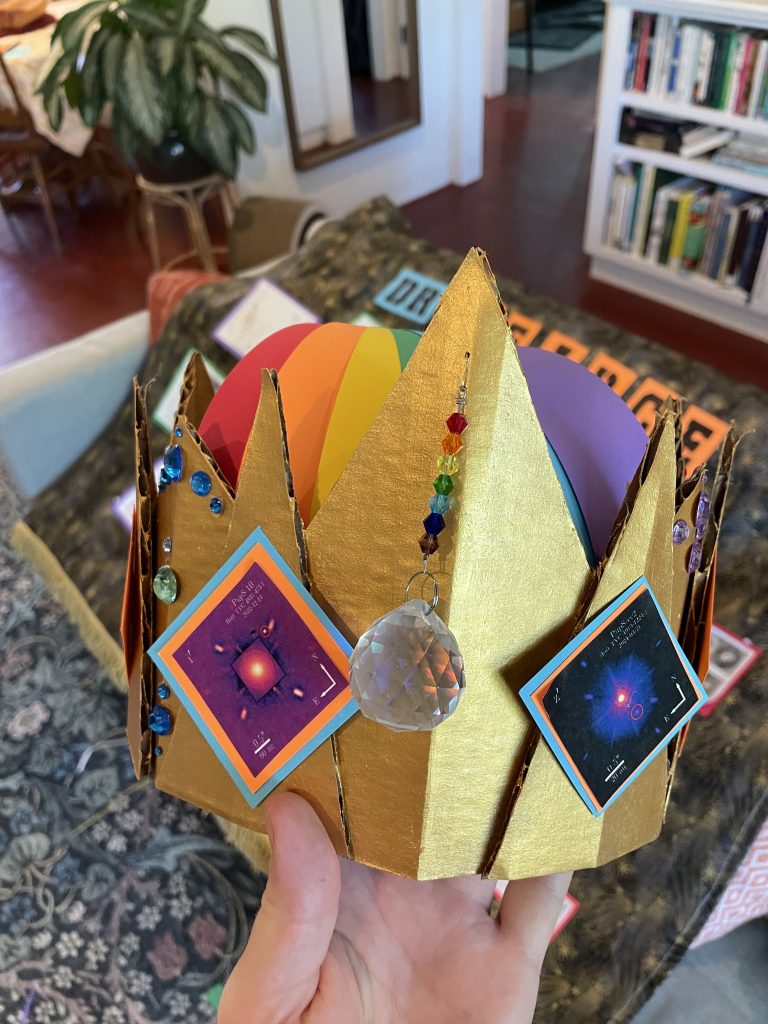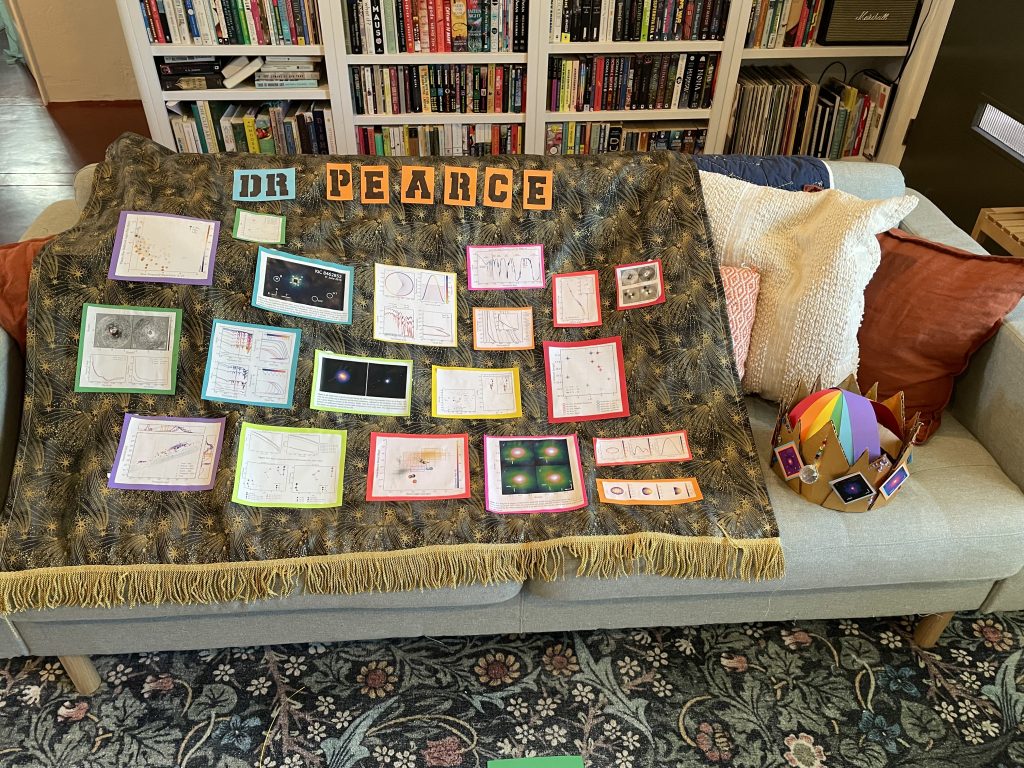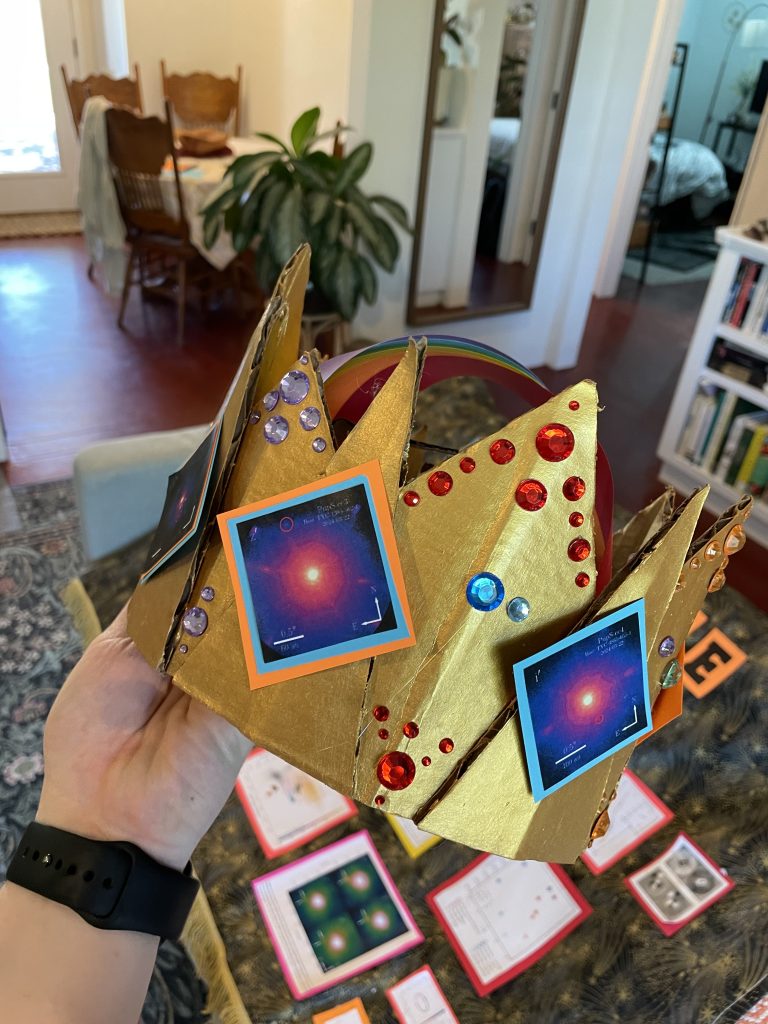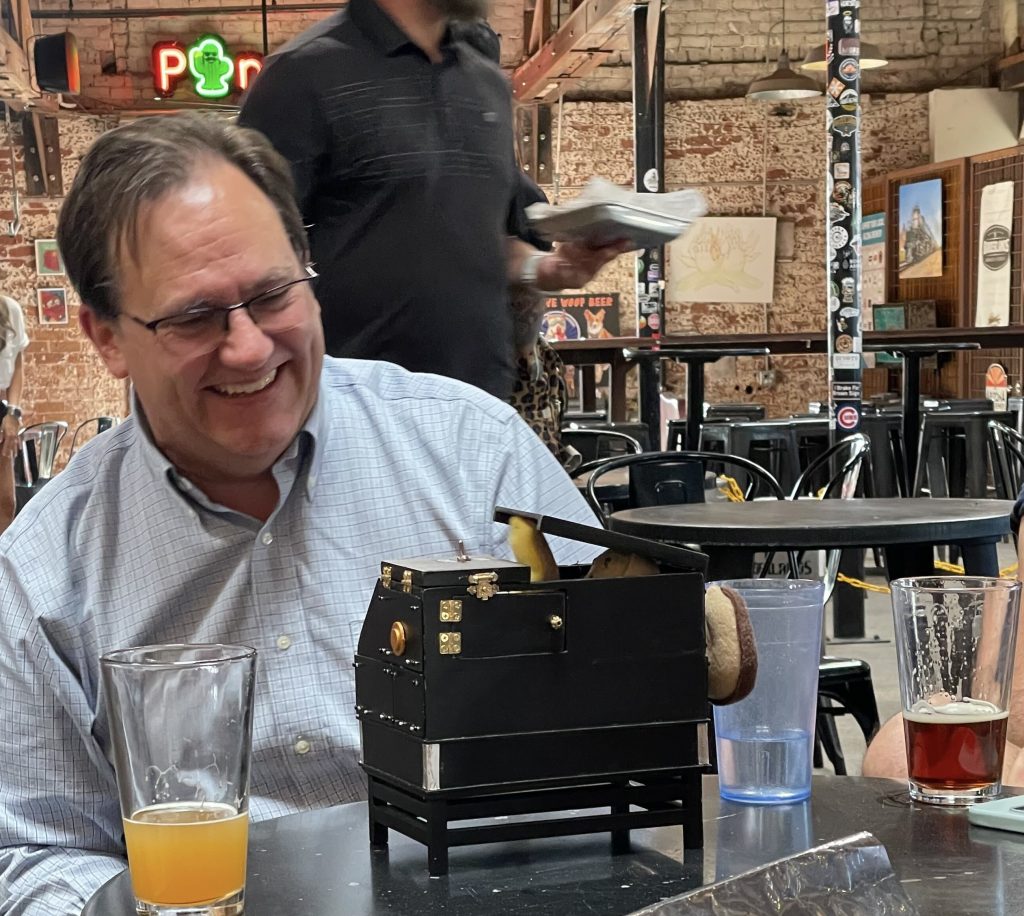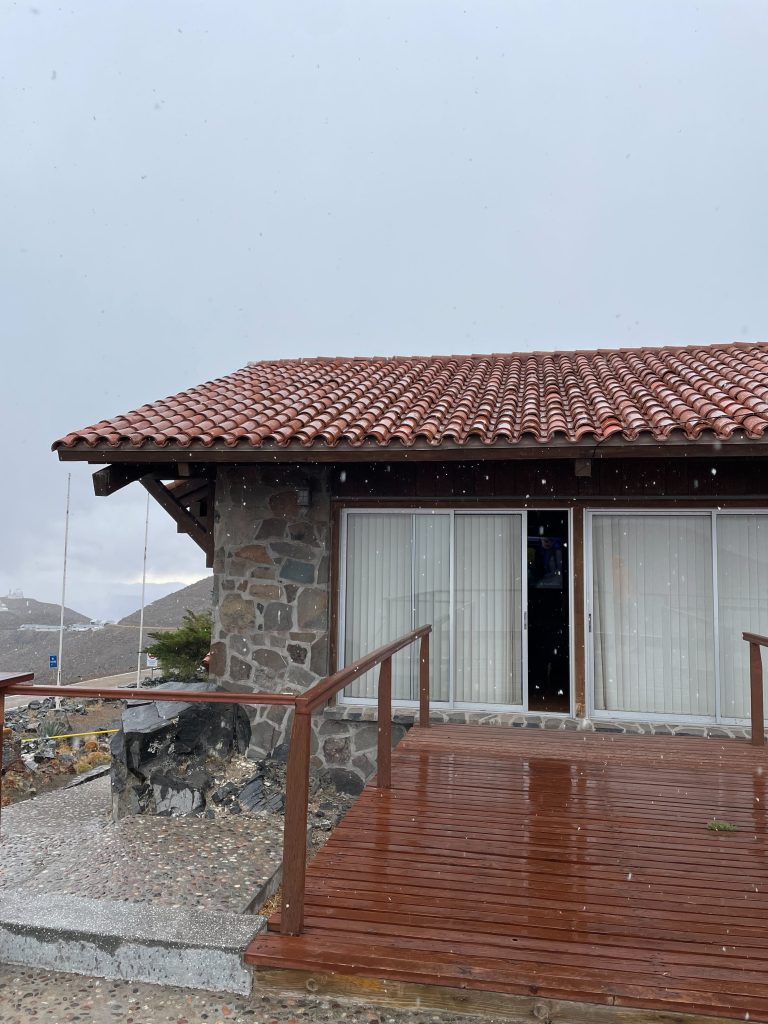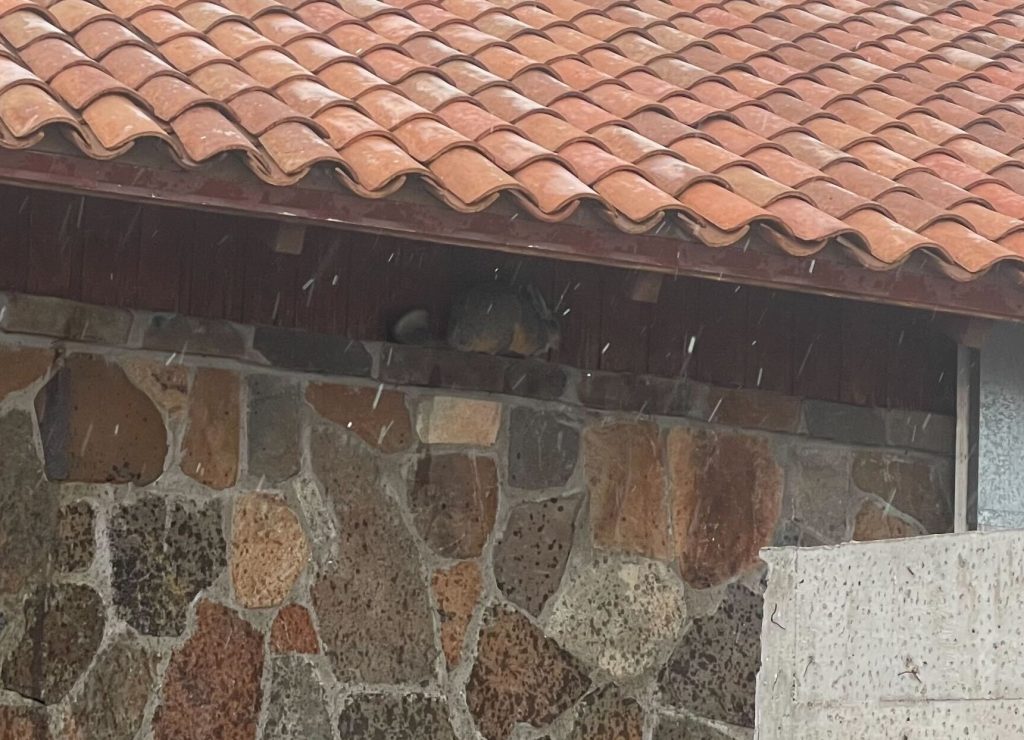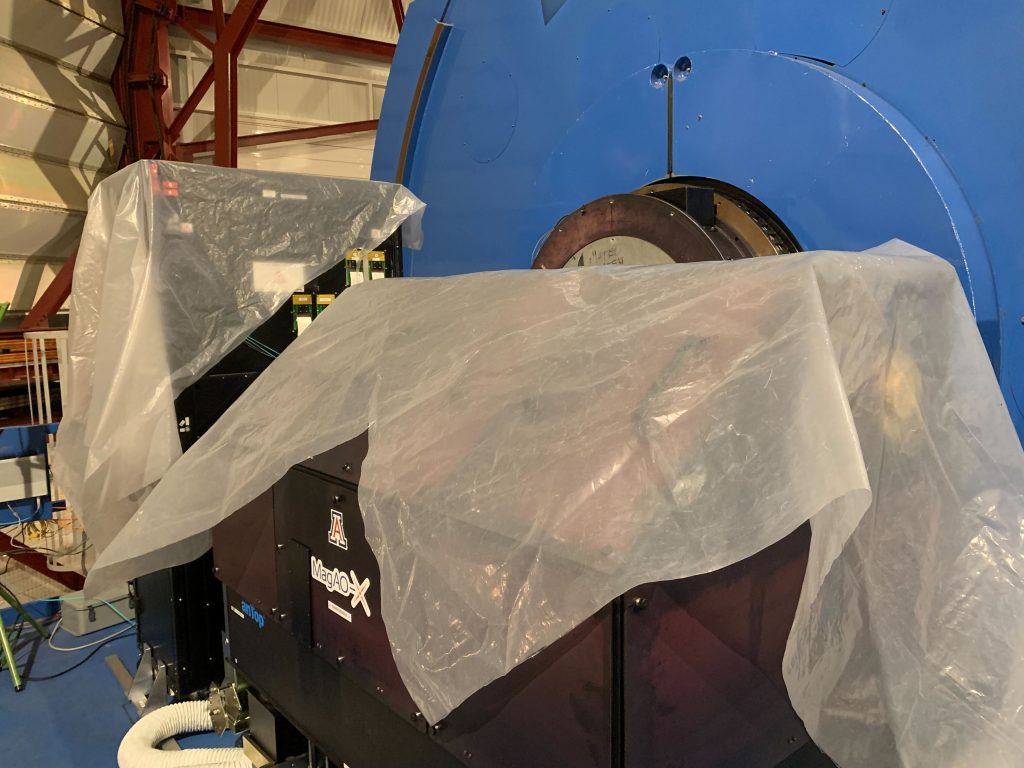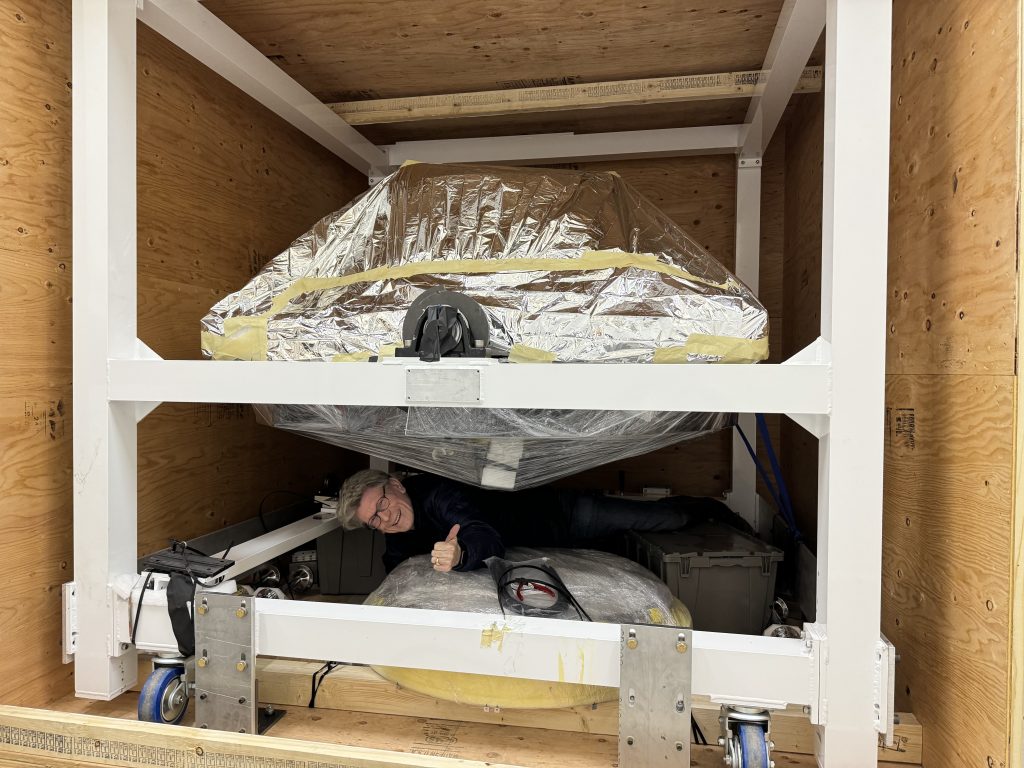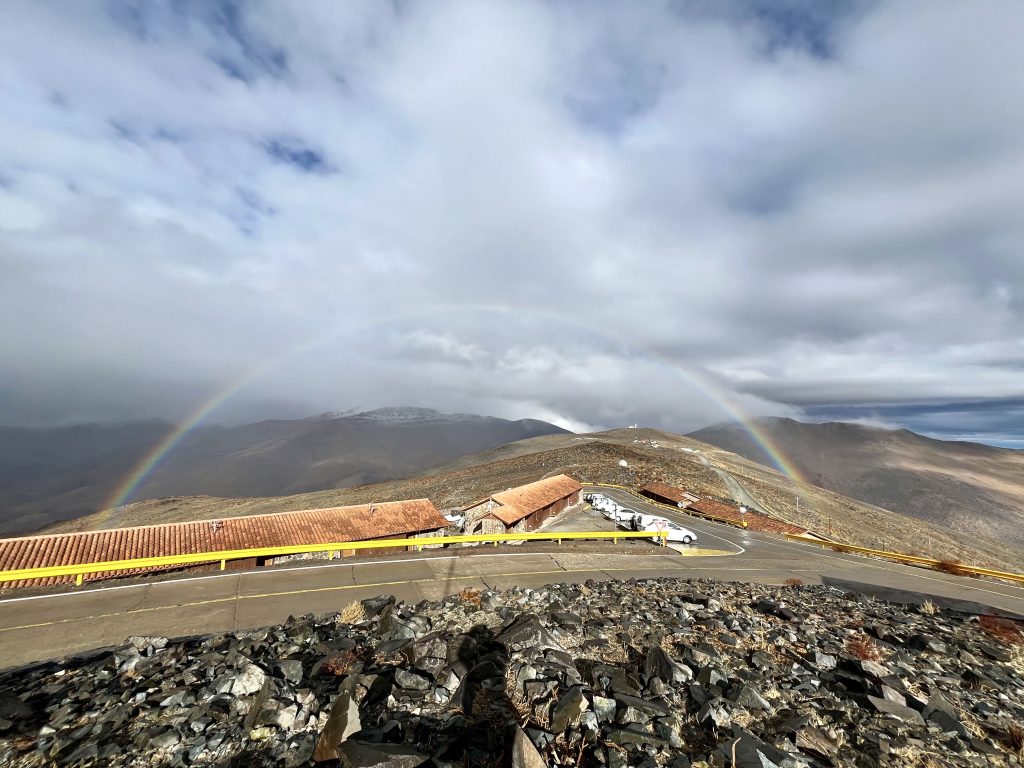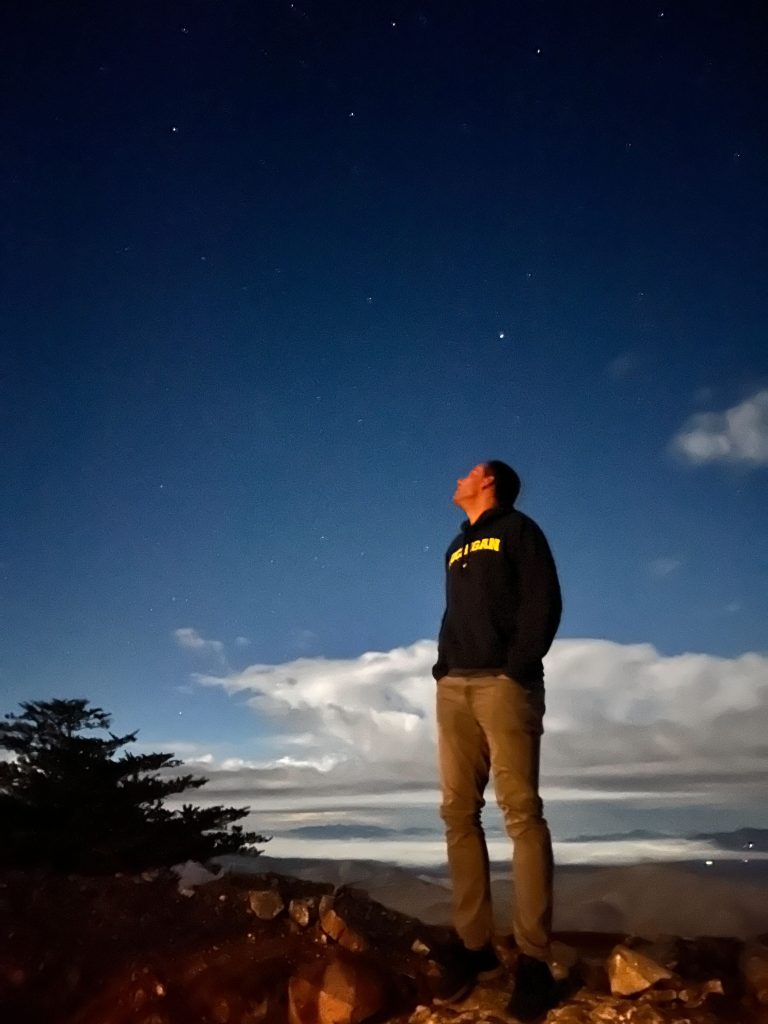It’s been a long-time dream of mine to see wild penguins. I have previously been thwarted by scheduling conflicts, pandemics, and the simple preference for being home after a month away rather than prolonging my travel further… but enough is enough. Once Maggie and Katie managed it, I had to get my act together and actually plan an outing. Due to scheduling constraints, this required me to steal away in the dead of night.

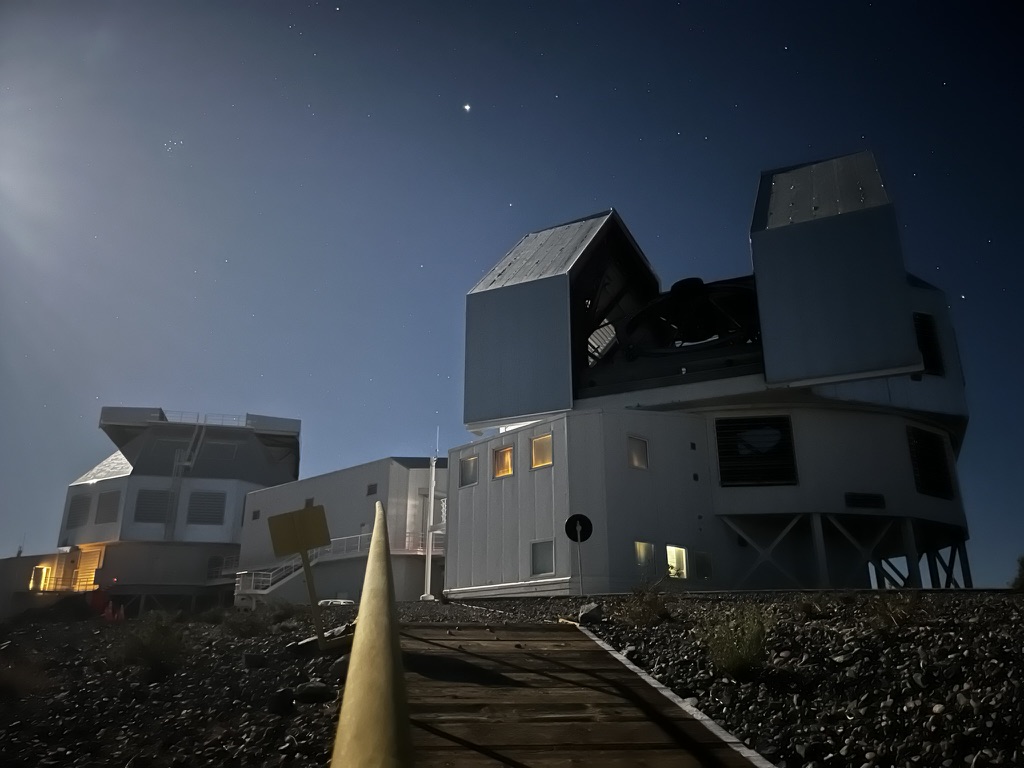
It’s much easier to plan such an excursion from the Las Campanas Observatory El Pino office than from the observatory itself, so I went to bed early, got up during the day, and rode down the mountain. El Pino lacks the food options of the lodge, but has an actual address you can give to people to come pick you up. The new rooms aren’t half bad, and they have a great view of La Serena… or they would, if someone had put a window in the southwest wall of Room #5.
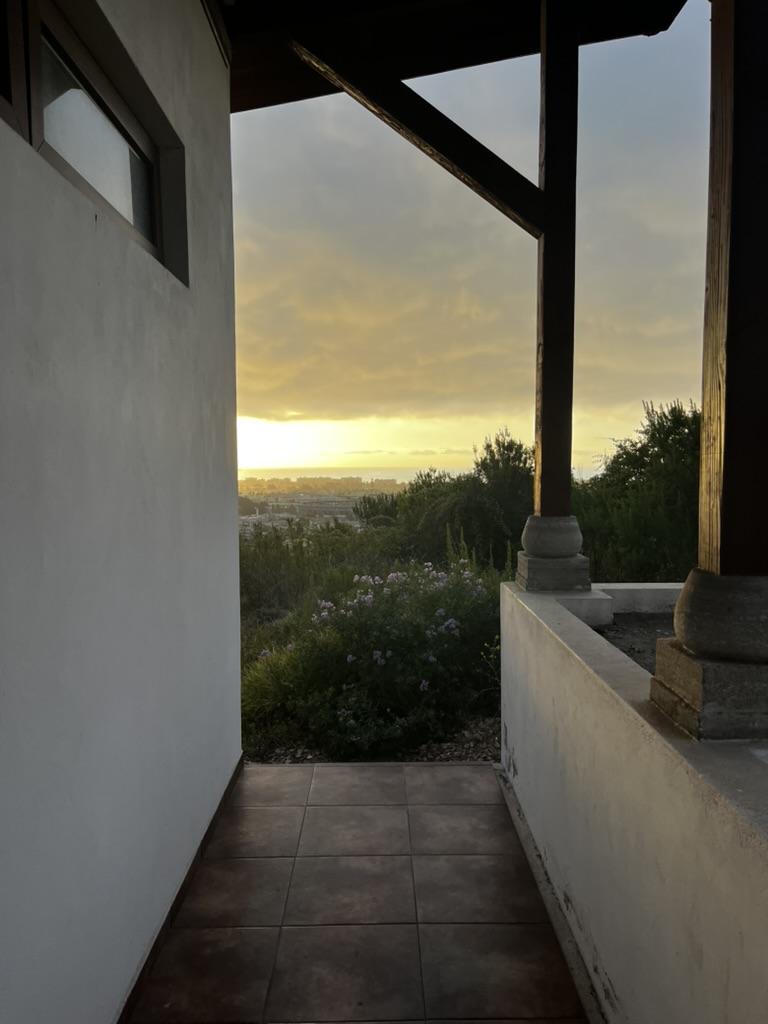
It is generally understood that the main reason for us northern-hemisphere types to travel south of the equator is to see penguins in the wild. (The explorers of old also noticed the constellations look kinda funky down here, but they’re probably just upside down or something.) These graceful and intelligent animals are found all the way up to the equator, but no further. Different species of penguins have evolved to adapt to different climates, making them available in a variety of fun flavors. Most penguins are flightless, but this blog records one exception.
The Antarctic Emperor penguin is, sadly for us, not visiting the 29th parallel. However, the Humboldt penguin is perfectly happy noodling around at the same approximate latitude (29°15′31″ S) as our beloved Magellan Telescopes (29°00′54″S). Their longitude, of course, differs. (This results in the penguins computing a different local sidereal time for their telescopes.)
Maggie covered the logistical particulars of this excursion well enough, so I won’t reiterate them here. The gist of it is:
- Take car from La Serena to boat.
- Take boat to penguin preserve.
- Take photographs.
- Provoke jealousy (optional).
So, without further ado, pingüinos:
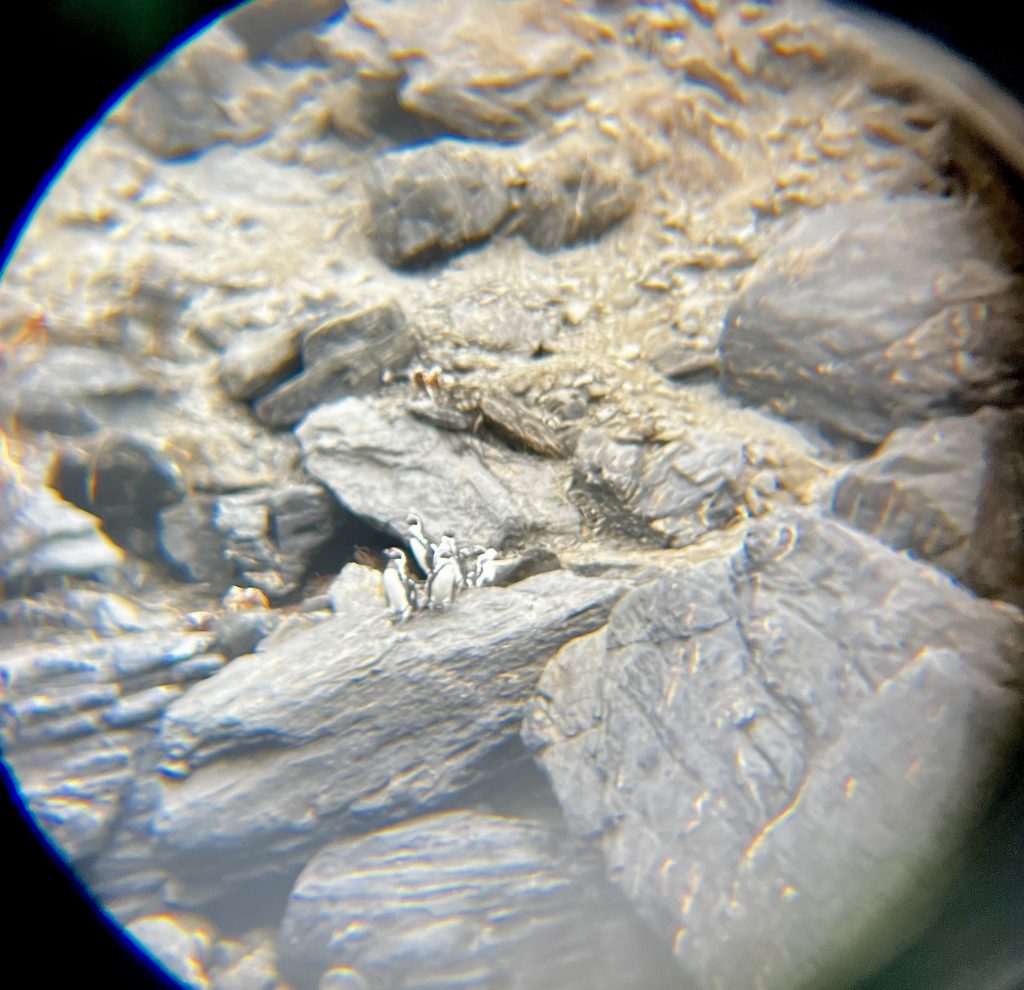
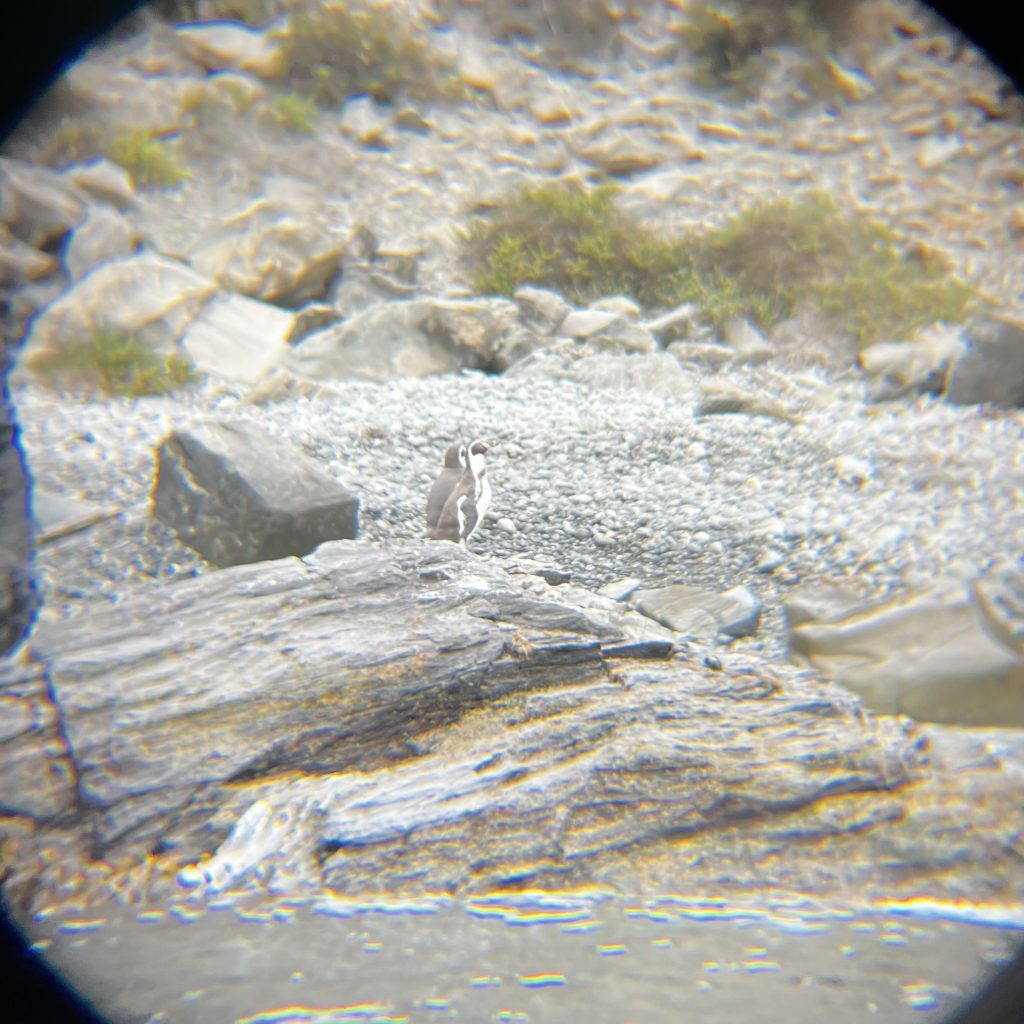
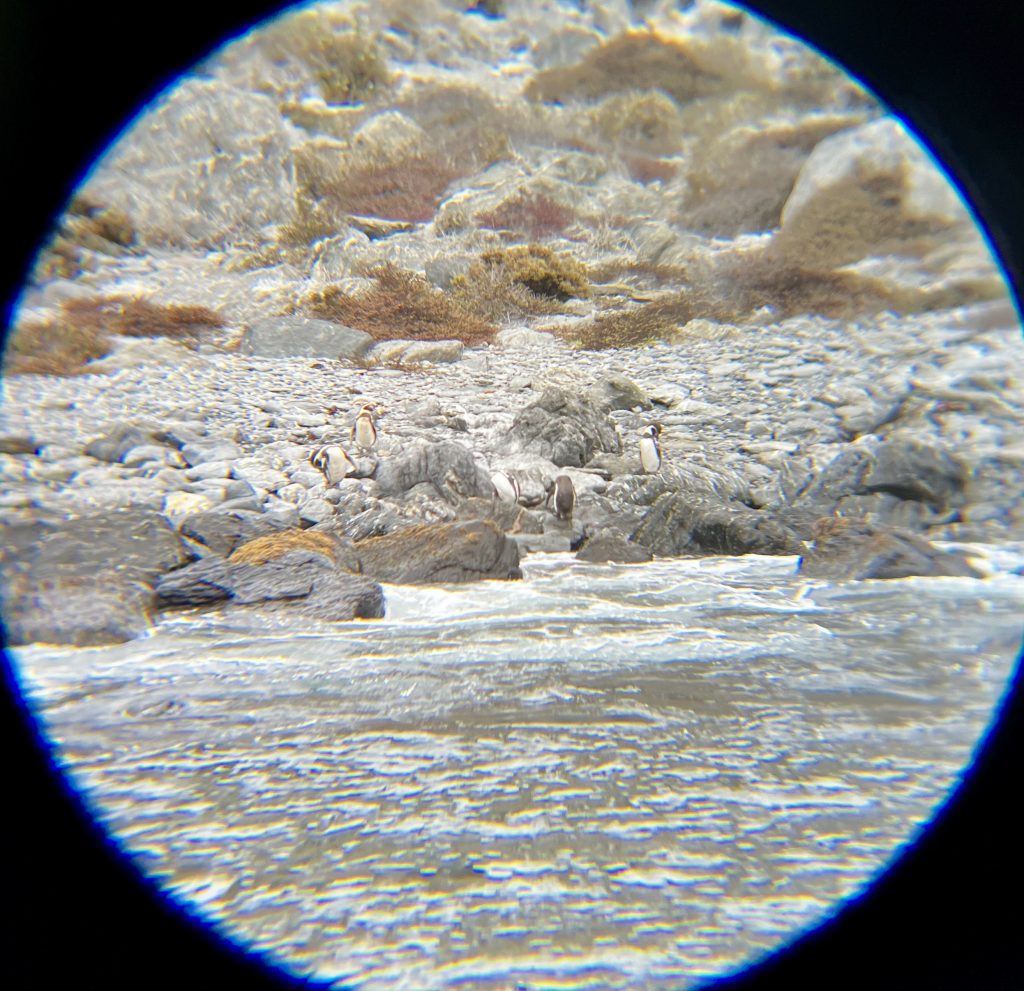
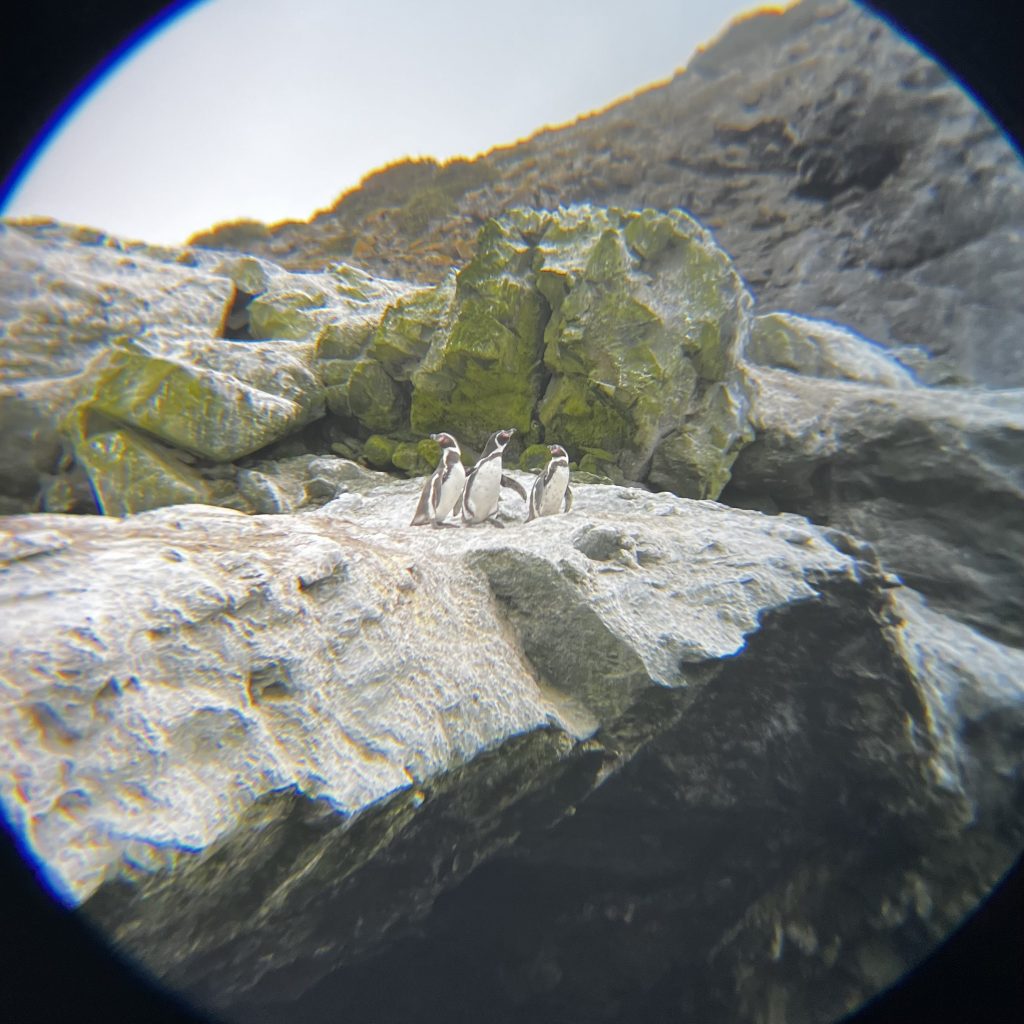
I lack a telephoto lens so there was a bit of optical alignment required between my phone camera and binoculars for most of these photos. Note that the penguins are very small because they are far away and also because they’re very small.
There were also some other goofy dudes.
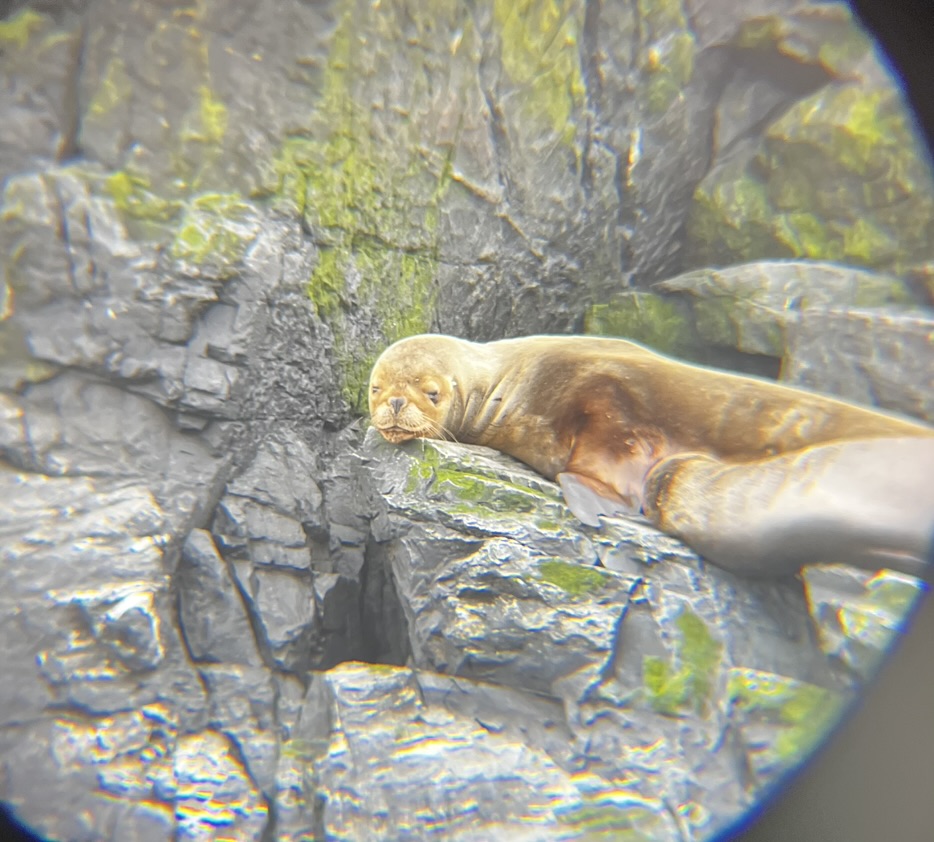
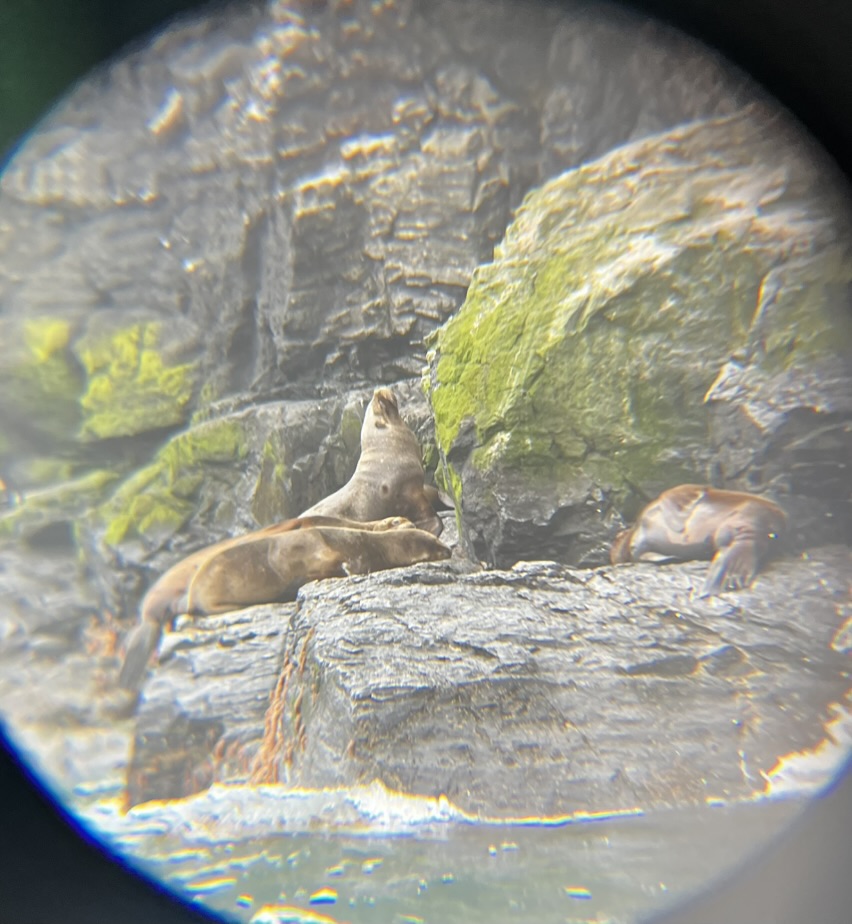
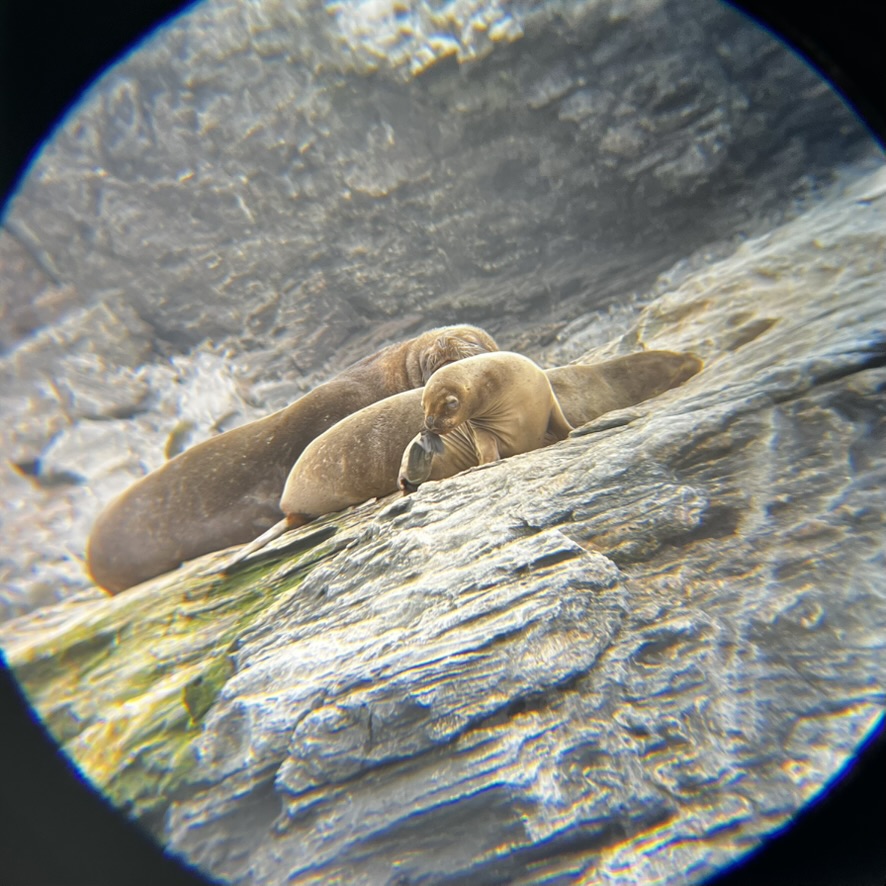
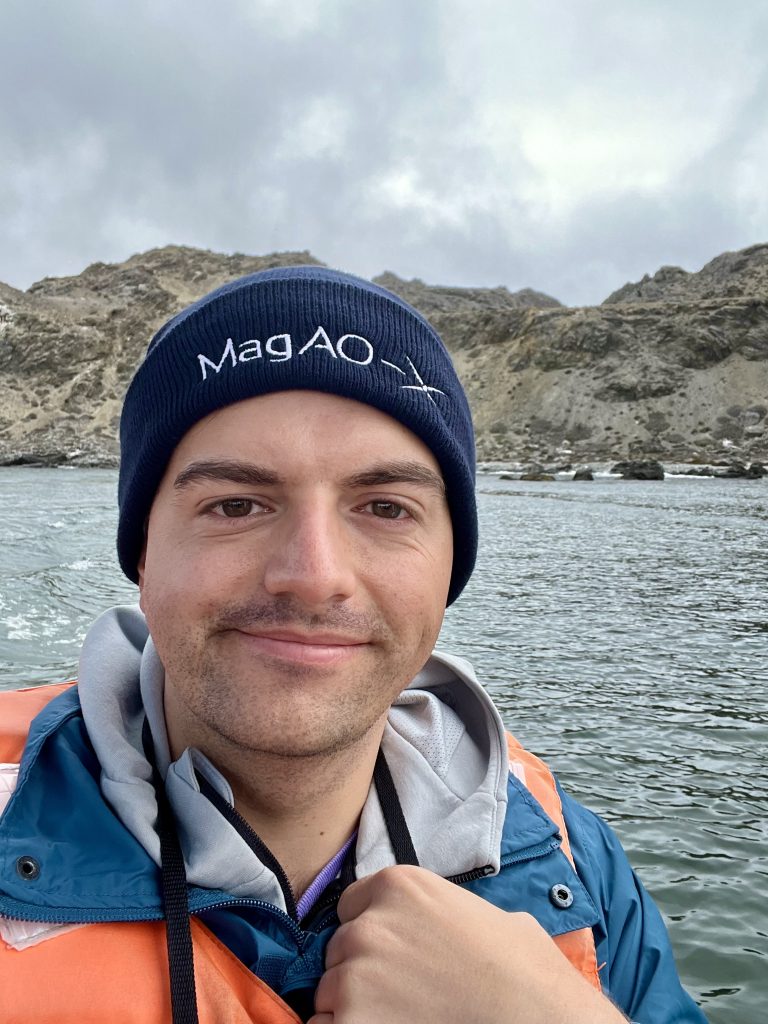
And on the way back, a family of dolphins came to play by the boat!

After returning to shore we also stopped at a spot exhibiting tour group—Andean fox symbiosis. They trotted right up when we pulled over, expecting treats.

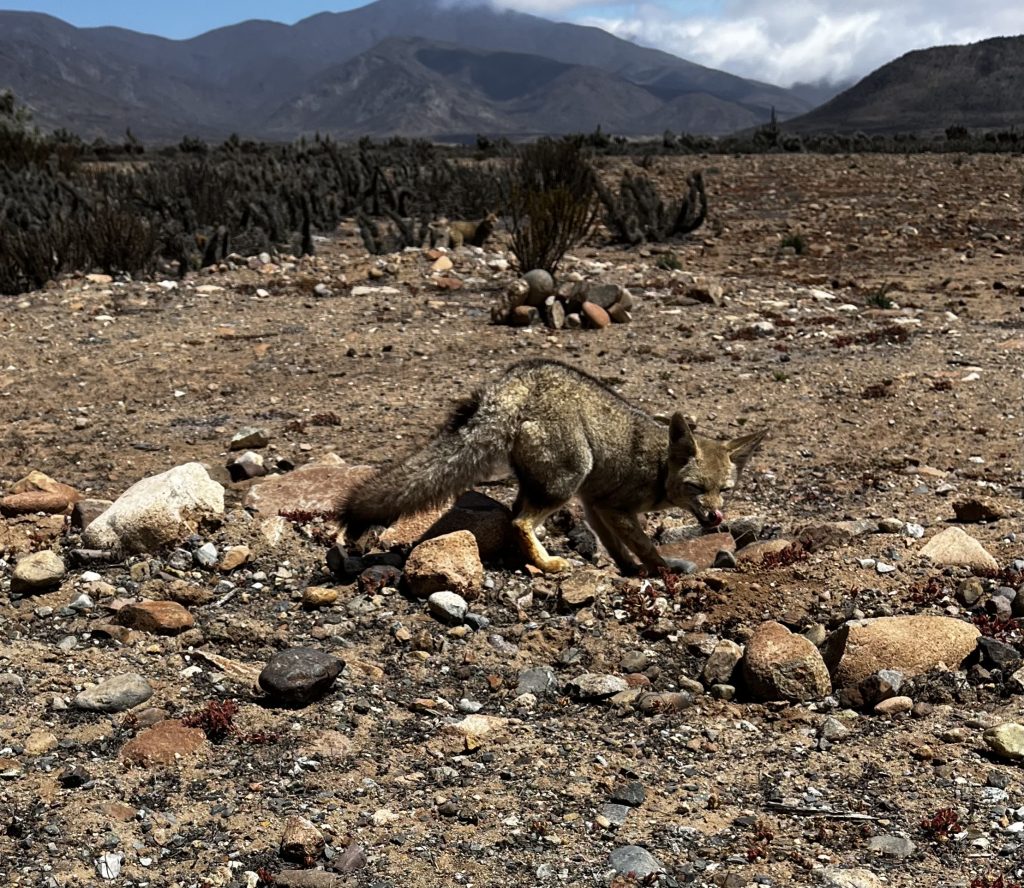
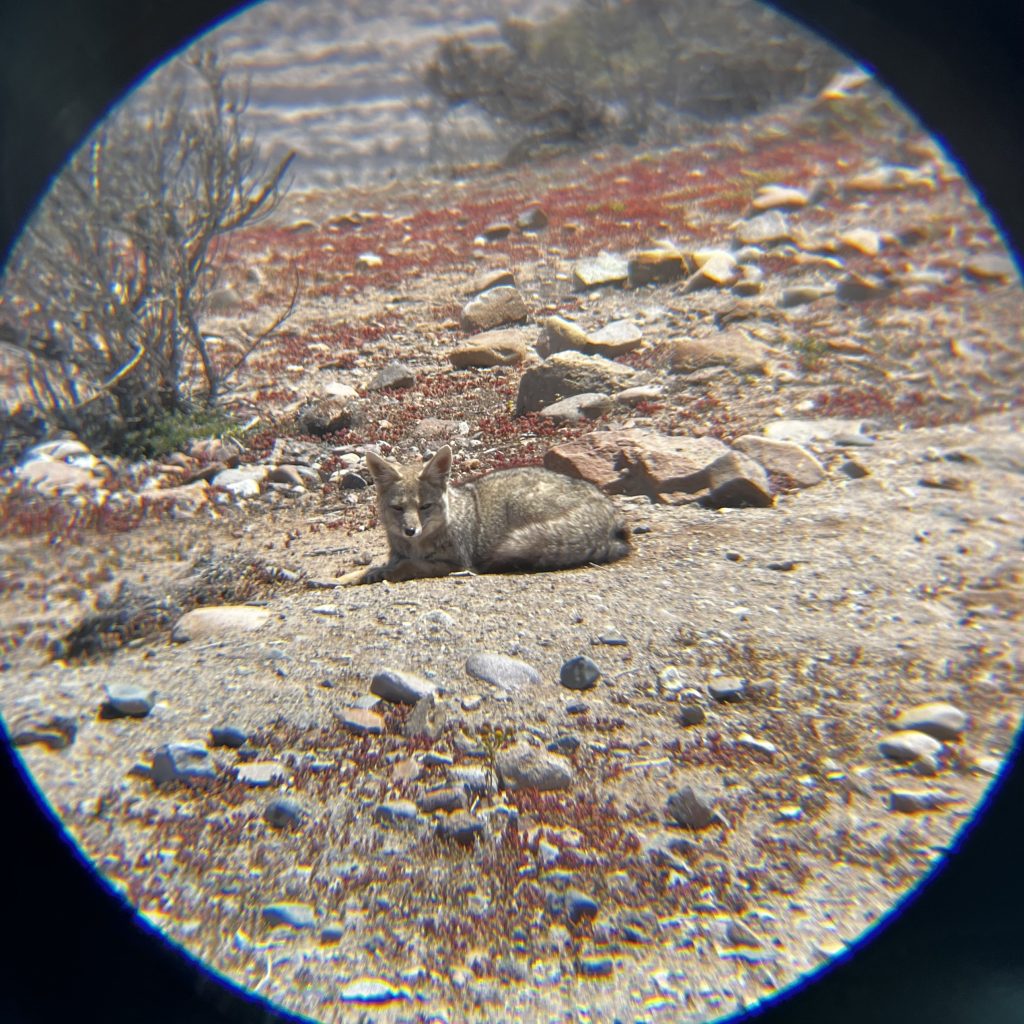
Note that we did not feed this fox. Mind you, someone‘s been feeding them.
One benefit of spending two nights down in La Serena was that I could restock our observing snack supply. The Magellan Clay break room has been kept well stocked with biscuits and The People’s Cheese, but one eventually craves variety.

Visiting grocery stores is one of my favorite things to do any time I’m in a foreign country. I believe you can learn a lot about a place by what people snack on. However, some things provoked more questions than answers.



Why is Sahne-Nuss the only candy in anti-theft packaging? What are Costco brand nuts (labeled in English) doing here? What kind of flavor is “cola de mono”?
Ponder these questions as you enjoy the…
Song of the Day
I hereby declare bonus blogs exempt from the per-run blog rules, being as they exist outside the blog-time continuum. Also, I don’t think I can incorporate any lyrics from this song in the post.
(天体観測 (tentai kansoku) does translate as “astronomical observation”, though.)
